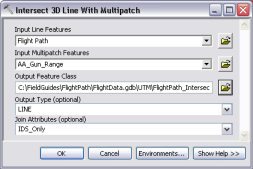
Most of the responses occurred within a distance of 40% of the perceptual range from the tip of the shapes.

When animals were attracted to edges, then they tended to collect in convexities and disperse from concavities, and the opposite happened when animals avoided edges. The response was mostly to absolute width of the shapes, and not the narrowness of them. When animals responded edges of patches, this created an emergent property of responding to the shape of the edge.
Arcmap 10.3 multipatch to singlepatch Patch#
Individual animals were modeled traveling inside a habitat patch that had different kinds of edge shapes (convex, concave and straight. This study used computer simulations to (1 find out whether effects of edge shapes on animal behavior can arise as emergent properties solely due to reactions to edges in general, without the animals reacting to the shapes of the edges, and to (2 generate predictions to allow field and experimental studies to test mechanisms of edge shape response. At the lowest level are the different habitats on each side of an edge, then there is the edge itself, and finally, at the highest level of organization, is the geometry or structure of the edge. There are three levels of organization of edge properties, and each of these can affect animals. A parametric study has been done so as to understand the effect of each parameter to obtain a better performance and optimised results.Įmergent properties of patch shapes affect edge permeability to animals.įull Text Available Animal travel between habitat patches affects populations, communities and ecosystems. Both the antennas uses Coaxial Probe feeding technique and Flame Retardant 4 (FR-4 as the substrate material with a thickness of 2.87 mm. The results show that the double E shaped wideband patch antenna has an impedance bandwidth of 10.7 % with a return loss of -13.6dB, -12.4 dB, -12.1dB and -14.2dB at resonant frequencies of 1.96 GHz, 3.62 GHz, 5.76 GHz and 6.82 GHz, whereas a conventional E shaped patch antenna operates at 2.5 GHz, 3.4 GHz and 5.5 GHz with a return loss of -16 dB each and impedance bandwidth of 10.6 %. The modified E shaped patch antenna is designed using CADFEKO and the results of return loss, Voltage Standing Wave Ratio (VSWR, gain of the proposed antenna are compared with a conventional E shaped patch antenna.

A DOUBLE E SHAPED MICROSTRIP PATCH ANTENNA FOR MULTIBAND APPLICATIONSĭirectory of Open Access Journals (Sweden)įull Text Available This paper presents a dual band Compact double E shaped Microstrip Patch antenna with enhanced gain for Worldwide Interoperability for Microwave Access (WI-MAX, Universal Mobile Telecommunication Systems (UMTS and Satellite applications.


 0 kommentar(er)
0 kommentar(er)
